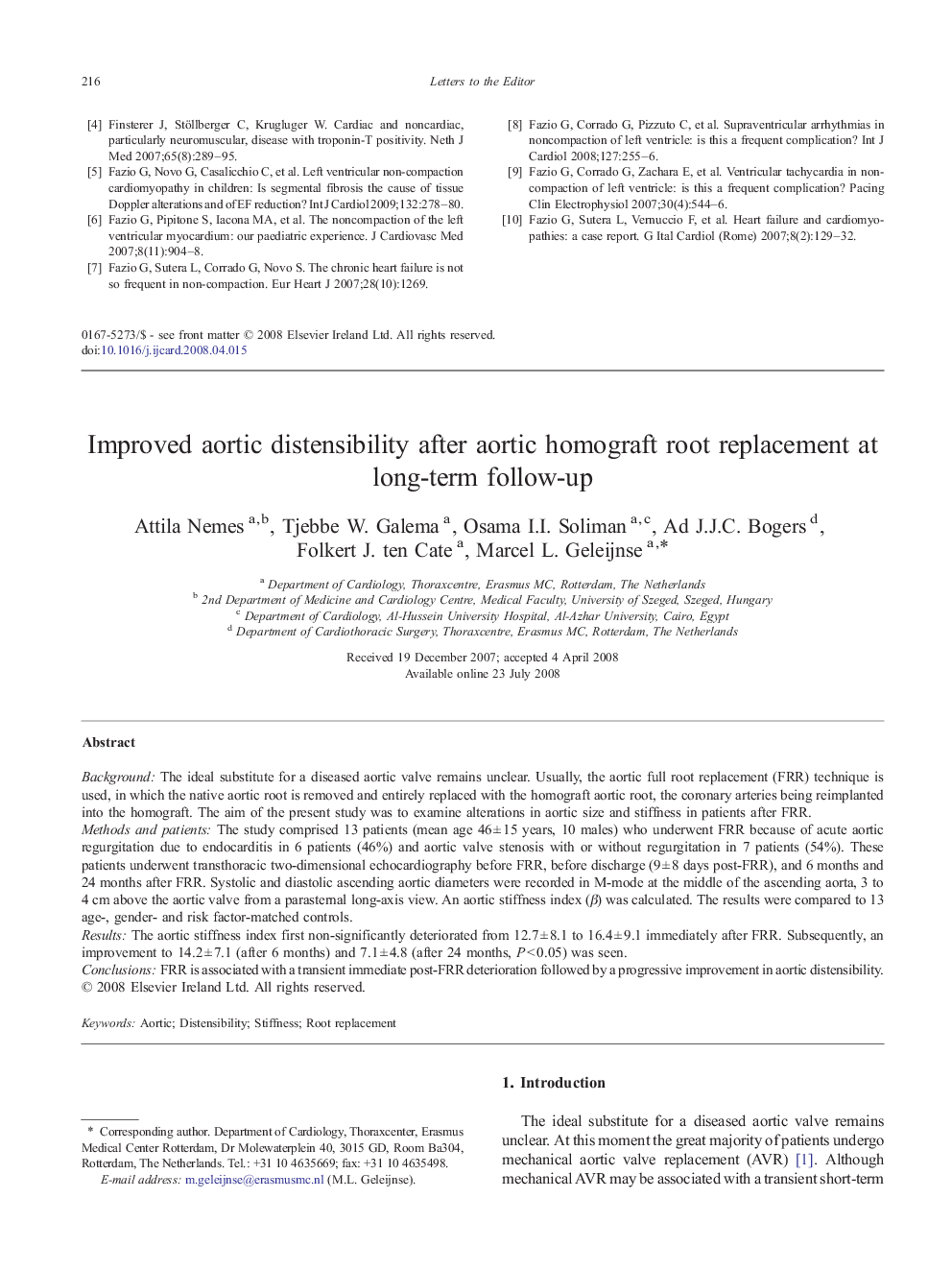| Article ID | Journal | Published Year | Pages | File Type |
|---|---|---|---|---|
| 2932655 | International Journal of Cardiology | 2009 | 4 Pages |
BackgroundThe ideal substitute for a diseased aortic valve remains unclear. Usually, the aortic full root replacement (FRR) technique is used, in which the native aortic root is removed and entirely replaced with the homograft aortic root, the coronary arteries being reimplanted into the homograft. The aim of the present study was to examine alterations in aortic size and stiffness in patients after FRR.Methods and patientsThe study comprised 13 patients (mean age 46 ± 15 years, 10 males) who underwent FRR because of acute aortic regurgitation due to endocarditis in 6 patients (46%) and aortic valve stenosis with or without regurgitation in 7 patients (54%). These patients underwent transthoracic two-dimensional echocardiography before FRR, before discharge (9 ± 8 days post-FRR), and 6 months and 24 months after FRR. Systolic and diastolic ascending aortic diameters were recorded in M-mode at the middle of the ascending aorta, 3 to 4 cm above the aortic valve from a parasternal long-axis view. An aortic stiffness index (β) was calculated. The results were compared to 13 age-, gender- and risk factor-matched controls.ResultsThe aortic stiffness index first non-significantly deteriorated from 12.7 ± 8.1 to 16.4 ± 9.1 immediately after FRR. Subsequently, an improvement to 14.2 ± 7.1 (after 6 months) and 7.1 ± 4.8 (after 24 months, P < 0.05) was seen.ConclusionsFRR is associated with a transient immediate post-FRR deterioration followed by a progressive improvement in aortic distensibility.
